Ground squirrels can damage many food-bearing and ornamental plants. They will enter gardens and devour vegetables in the seedling stage, gnaw on plastic sprinkler heads and irrigation lines, eat the eggs of ground-nesting birds and can be quite destructive. This humane DIY squirrel trap can help you eliminate those pesky little varmints!
Table of Contents
Step 1: Gather the required materials and tools.
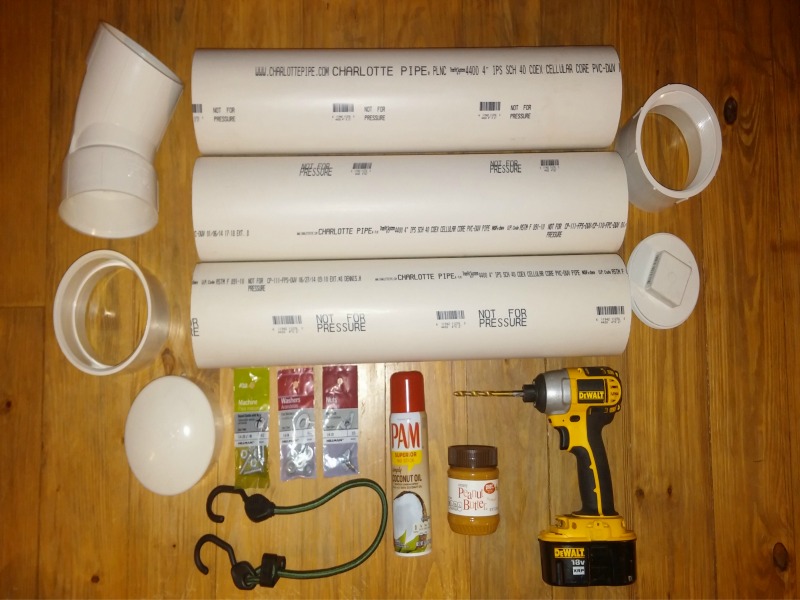
– Three pieces of PVC plastic drain pipe, 4 inch diameter, 2 feet long each (total of 6 feet)- One PVC 45 degree elbow, 4 inch diameter- One PVC clean out plug, 4 inch diameter- One PVC adapter fitting, 4 inch diameter (threaded on one end for the clean out plug above)- One PVC coupling fitting, 4 inch diameter- One PVC pipe cap, 4 inch diameter- Two machine screws, zinc or stainless steel, 1/4 inch diameter, 1 inch long- Four nuts to match the screws above- Two washers to match the screws above- Two wing nuts to match the screws above- One adjustable 2 foot bungee cord- One can of spray cooking oil- One small jar of peanut butter
Tools:- Power drill with 1/4 inch bit
Step 2: Drill holes in pipe.
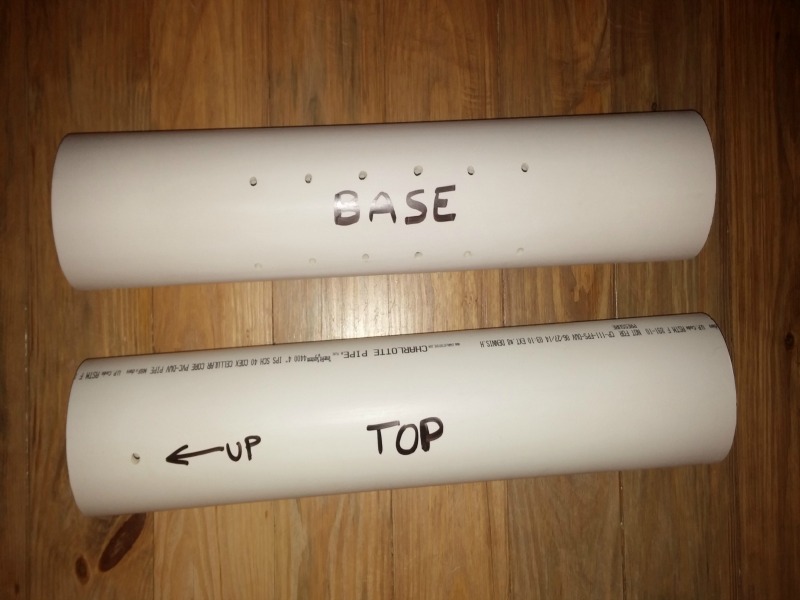
Using the power drill, drill multiple 1/4 inch diameter holes in one of the 2 foot long pieces of PVC pipe. Do not drill holes in the last 6 inches of each end of the pipe. This pipe will be the BASE of the trap.
Select a different 2 foot long piece of PVC pipe. Drill two 1/4 inch diameter holes approximately 2 inches from one end of the pipe.
The holes should be directly across from each other on opposite sides of the pipe. This pipe will be the TOP of the trap and the end with the two holes will point up, when assembling the final trap.
Step 3: Assemble the trap base
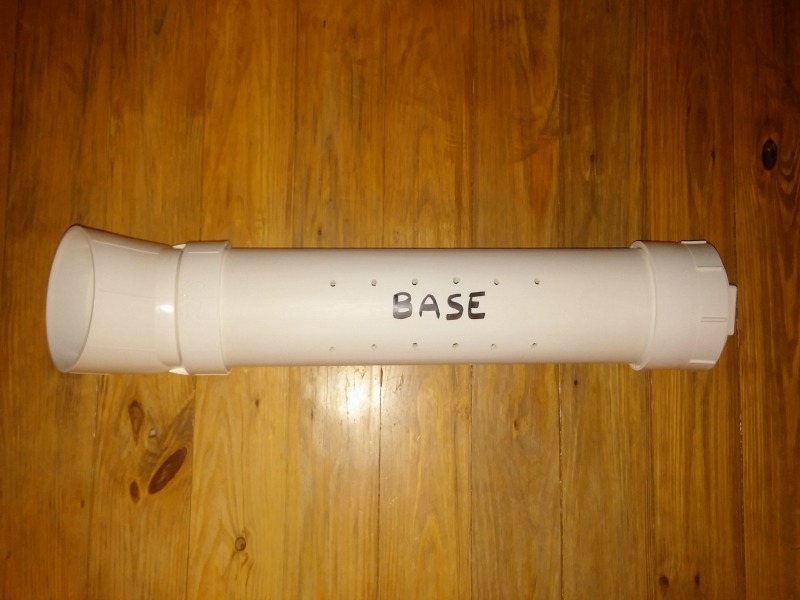
Attach the PVC adapter fitting to one end of the BASE pipe and carefully screw the clean out plug into the threaded section of the adapter fitting.
Attach the PVC 45 degree elbow to the other end of the BASE pipe. (Do not use PVC adhesive or glue to attach any of the PVC pipes or fittings.)
Step 4: Assemble the top of the squirrel trap
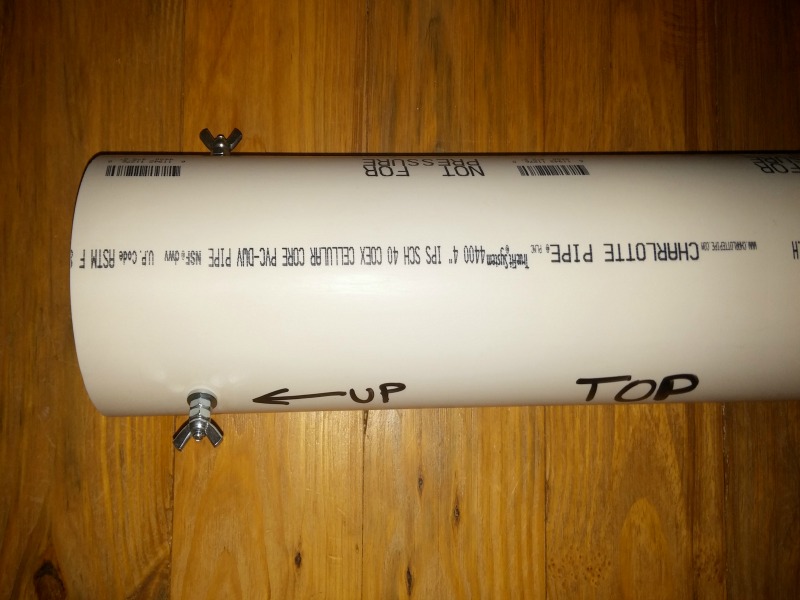
On the end of the TOP pipe with the two holes, reach inside the pipe and push one machine screw through each of the holes.
The head of each screw should be inside the pipe with the threaded part outside of the pipe. On the outside of the pipe, place a washer on each of the screws, screw two nuts on each screw, and screw one wing nut on each screw.
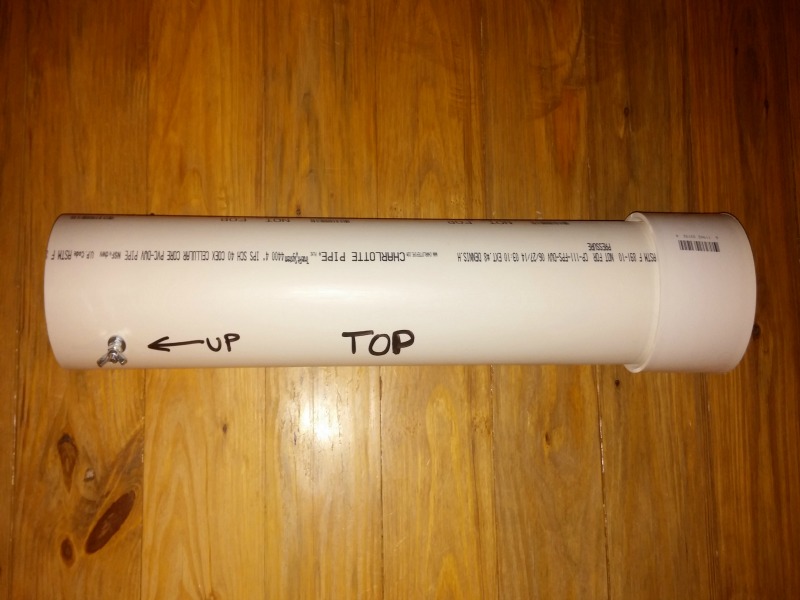
Attach the PVC coupling fitting to the end of the TOP pipe without the holes. (Do not use PVC adhesive or glue to attach the fitting.)
Step 5: Assemble and bait the trap

The remaining pipe is the MIDDLE of the trap. Insert one end of the MIDDLE pipe into the open end of the PVC coupling fitting on the TOP pipe.
Insert the other end of the MIDDLE pipe into the open end of the PVC 45 degree elbow on the BASE pipe. (Do not use PVC adhesive or glue to attach the fitting.)
The fully assembled trap will look like a big hockey stick.
Spray a light coating of cooking oil on the inside of the TOP and MIDDLE pipes. This will keep the squirrels from escaping when trapped.
Using your fingers or a long spoon, smear peanut butter on the inside of the TOP pipe about 8-10 inches from the open end of the pipe. The peanut butter is the bait. You can also place peanuts or something similar in the BASE pipe, if you wish.
Step 6: Select a location and place the trap.
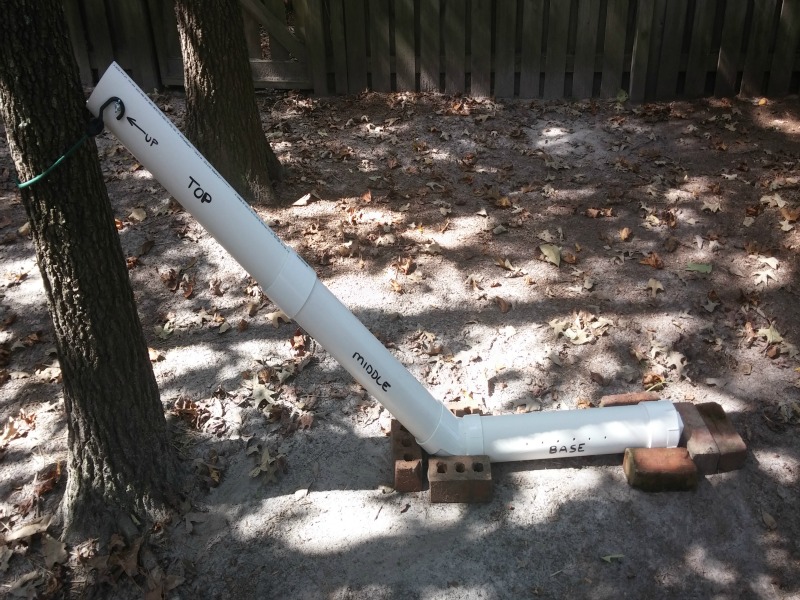
Look for a sturdy tree in an area with squirrels. Be sure you can easily see and get to the base of the tree trunk. Place the trap next to the tree with the BASE on the ground and the TOP touching the tree trunk.
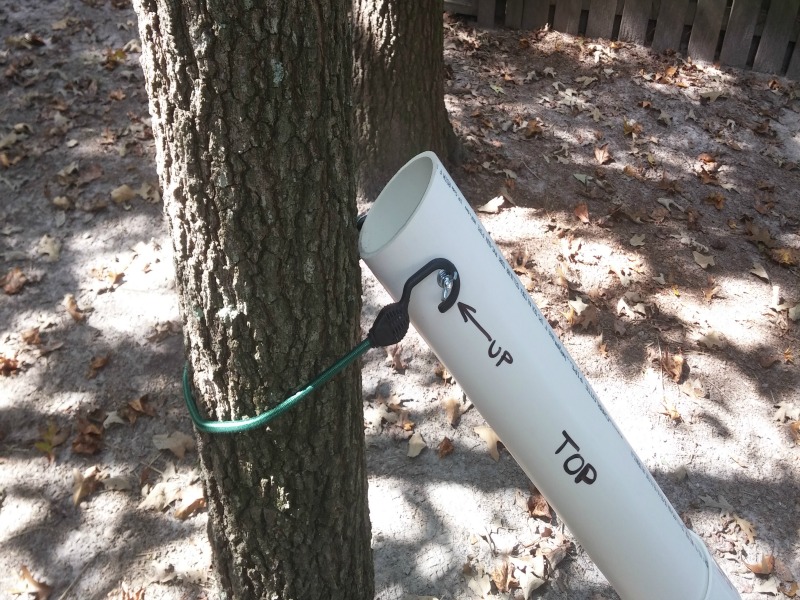
Secure the TOP to the tree trunk with the bungee cord.
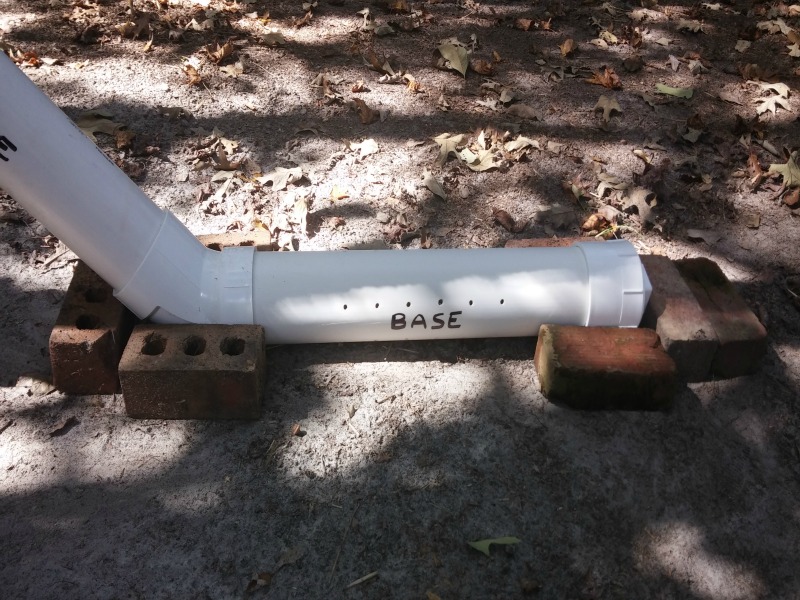
You can also place bricks or rocks around the BASE to help keep it in from moving.
Step 7: Catch some squirrels.
Wait for a squirrel to sniff out the bait and slide down into the BASE.
Once you have one trapped, it’s up to you as to what to do with the squirrel.
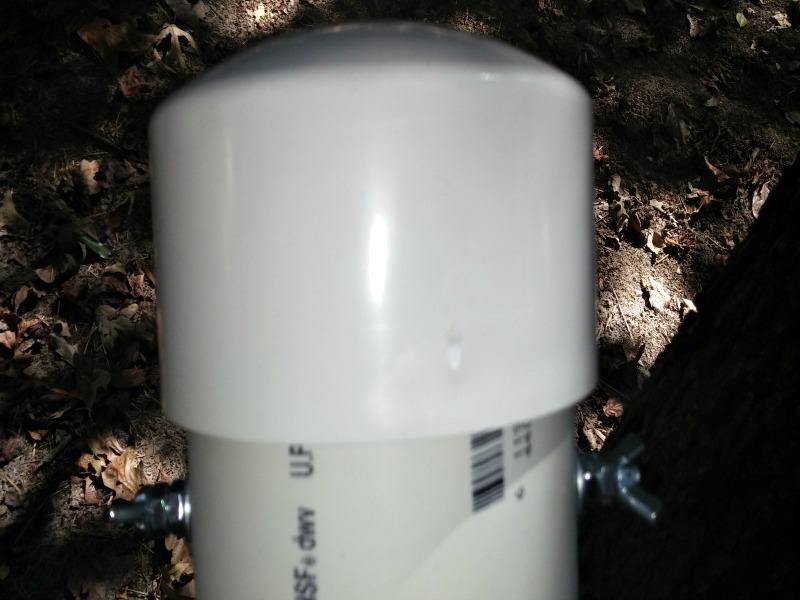
If you choose to relocate the squirrel, place the pipe cap on the open end of the trap before moving the squirrel to its new home.
NOTE: You may wish to vary the length or diameter of the plastic pipe depending on the size of your squirrels or available materials. I chose to use schedule 40, foam core DWV (drain, waste, and vent) pipe because it will stand up to periodic bumps and drops without much problem. Materials for the 4 inch diameter trap cost about $50.
James Hammond is a disabled veteran and has done landscaping and home renovation projects for over 25 years.











































